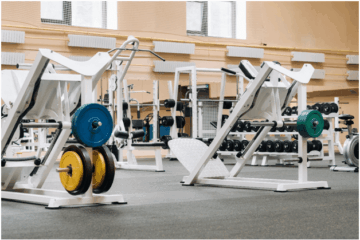From the perspective of frequency of use, commercial fitness equipment was originally designed to meet the needs of high-intensity, long-term frequent use. Therefore, they are more durable in material and structure, and can withstand repeated use by a large number of users. For example, the motor power of commercial treadmills is usually large, and they can maintain stable performance during long-term operation; the frame of commercial spinning bikes is made of high-strength steel and can withstand large impact forces. The frequency of use of home fitness equipment is relatively low, and it is generally only used occasionally by family members. Therefore, the requirements for materials and craftsmanship are relatively low, and the price is more affordable. For example, the motor power of a home treadmill is relatively small, and the frame material may also be relatively thin, but this does not affect its ability to meet the needs of daily family fitness.

In terms of functions, commercial fitness equipment pursues comprehensiveness and professionalism, and usually has more adjustment options and advanced functions to meet the diverse needs of different users. For example, a commercial comprehensive trainer may be equipped with a variety of training accessories that can achieve a variety of different training movements; a commercial treadmill may have advanced functions such as heart rate monitoring, virtual reality running, and online courses. Home fitness equipment focuses more on simplicity and ease of use, and mainly meets the basic fitness needs of home users. For example, the operating interface of home fitness equipment is usually more concise and clear, and the function settings are relatively few, but it can meet the needs of family members for simple aerobic exercise and strength training.
In terms of space occupation, commercial gyms usually have larger spaces, so large and multifunctional fitness equipment can be placed. For example, commercial gyms can accommodate large power training racks, modular aerobic equipment, etc. However, home space is relatively limited, so when choosing fitness equipment, people tend to choose small and storable products. For example, foldable treadmills, elliptical machines, etc. can be easily stored when not in use to save space. In addition, some small fitness equipment, such as dumbbells, elastic bands, etc., are also very suitable for home use. They not only take up little space, but are also easy to use.
In terms of after-sales service, commercial fitness equipment is usually equipped with a professional after-sales service team that can provide regular maintenance, fast repairs and timely technical support. This is very important for commercial gyms because once the equipment fails, it can be repaired in time and will not affect the normal use of members. The after-sales service of home fitness equipment may be relatively simple, generally only providing basic repair and return and exchange services. Therefore, when purchasing home fitness equipment, choose reputable brands and merchants to ensure that you can get timely support when you need after-sales service.
When choosing fitness equipment, you should consider it comprehensively according to your usage scenarios, budget and fitness goals. If you are a commercial gym operator, you should choose professional, durable and comprehensive commercial fitness equipment; if you are a home user, you can choose small, practical and reasonably priced home fitness equipment.



